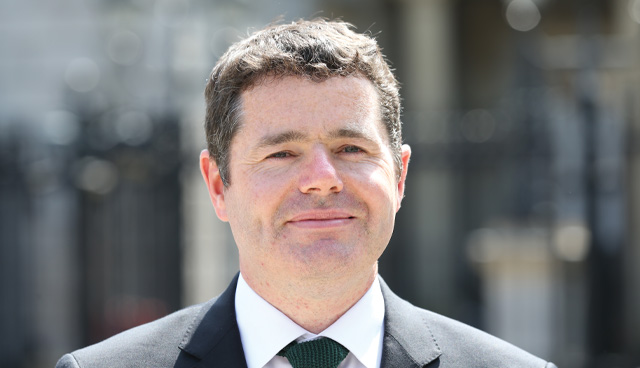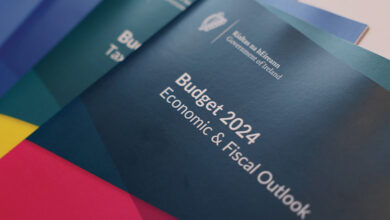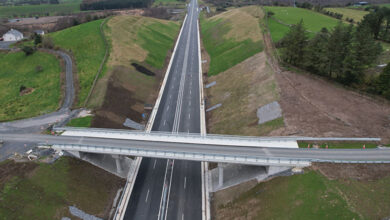Recovering from Brexit and Covid

Budget 2021 contained within it a €3.4 billion recovery fund to enable Ireland’s response to Brexit and Covid-19. eolas details where those funds are coming from and the hopes for its utilisation.
The recovery fund makes up over half of the €5.5 billion set aside under the €18 billion budget package to deal with the two greatest threats to the Irish economy: Brexit and Covid-19. The remaining €2.1 billion will be made up by contingency funding.
The funding is to be used to top up emergency wage supports, social welfare payments, Brexit schemes and health measures. Speaking in October 2020, as budget measures were being outlined, Tánaiste and Minister for Enterprise Leo Varadkar TD explained that the fund was created because “we don’t know what’s going to happen with the pandemic… we don’t know if there’ll be a third wave, when it will start, how long it might go on for”.
Varadkar said: “We have to be in a position to make decisions like, for example, extending the PUP for a longer period, making sure the wage subsidy scheme is there for us as long as needed, maybe extending the Covid Restrictions Subsidy Scheme.”
In his budget speech, Minister for Finance Paschal Donohoe said that the recovery fund “will be targeted and will help stimulate increased domestic demand and employment”, with three main focus areas: infrastructure development; reskilling and retraining; and supporting investment and jobs. The first €100 million from the fund was approved for the Department of Enterprise, Trade and Employment for Brexit preparations in October 2020.
Donohoe explained that with €400 million of the €2.1 contingency fund expected to go to health expenditure, the €3.4 billion recovery fund would remain available regardless of the level of public health guidance throughout 2021. Donohoe said: “The recovery fund is independent of whatever public guidance is in place for 2021. It is obviously the strong hope that we are successful with efforts against the disease, but regardless of where we are in the public health guidance, that figure will be available. Minister [for Public Expenditure, Michael] McGrath and I will make recommendations to the Government on how and when to spend that figure.”
Varadkar had at the same time said that the Government would have to examine if schemes such as the PUP and the CRSS would be extended past March 2021. In January 2021, after the Department of Finance reported that the Government had accrued an overall deficit of €19 billion for 2020 McGrath used the Covid recovery fund to allay any fears of decreased public spending.
“If you look at the amount we have actually allocated to departments, through the votes in terms of Covid, it’s of the order of €6.5 billion and then when you add the contingency fund of €2.1 billion and recovery fund of €3.4 billion, there is provisions there as such for exceptional type spending of the order of €12 billion,” McGrath said.
Where exactly the €3.4 billion recovery fund will be targeted has not yet been forthcoming from the Government, but the Department of Finance’s November 2020 publication Taking Stock: The Fiscal Response to Covid-19 says that the fund will allow Government to “respond swiftly and decisively to the evolving public health and economic situation, including the fallout from the ending of the transition period (that governs bilateral trade with the UK) at end-December”.

“The recovery fund is independent of whatever public guidance is in place for 2021. It is obviously the strong hope that we are successful with efforts against the disease, but regardless of where we are in the public health guidance, that figure will be available. Minister [for Public Expenditure, Michael] McGrath and I will make recommendations to the Government on how and when to spend that figure.”
Paschal Donohoe TD, Minister for Finance
The recovery fund, the document says, was “designed to be flexible and is a deliberate effort by Government to allow, within the budgetary framework, for the unprecedented level of economic uncertainty that currently prevails”. The fund is said to be “sufficiently large to provide a significant stimulus to the domestic economy, should it be needed”, and “can be deployed to finance direct public expenditure measures or taxation measures; the exact allocation will depend on what is the most appropriate policy instrument at the time”.
It is also explained that once the (immediate) Brexit and Covid threats have passed, the resources under the fund can be “withdrawn in a timely manner”, meaning that the €3.4 billion will not enter the tax or expenditure base due to the Fiscal Stability Treaty legally requiring balanced budgets in “normal times”.
The question of how such spending will be funded was answered in part by the National Treasury Management Agency’s sale of 10-year bonds in January 2021. The €5.5 billion raised in the selling of the bonds was greater than expected and will cover a third of the minimum borrowing the State plans on raising in 2021 to deal with the Covid crisis. The deal raised more than €40 billion of orders, the NTMA said, with the bonds carrying a record negative interest rate for the Irish Government’s 10-year deal, −0.257 per cent.
The negative rate is a reflection of European Central Bank efforts to keep borrowing rates low in the Eurozone during Covid crisis. Between €3 billion and €4 billion had been expected to be raised by the ond sales, with a further €16 billion to €20 billion to be raised throughout 2021 after the NTMA raised €24 billion last year at interest rates of 0.002 per cent.
Having entered level five lockdown restrictions in January 2021, once again closing construction sites and halting work on the building of some essential infrastructure, the type of funding involved in the recovery fund will undoubtedly be needed across the Irish economy. Despite there being no details as yet about exactly when and where the funding will be made available, the message from the Government is that infrastructural investment and development will not be allowed to falter as it was following the 2008 financial crisis.





